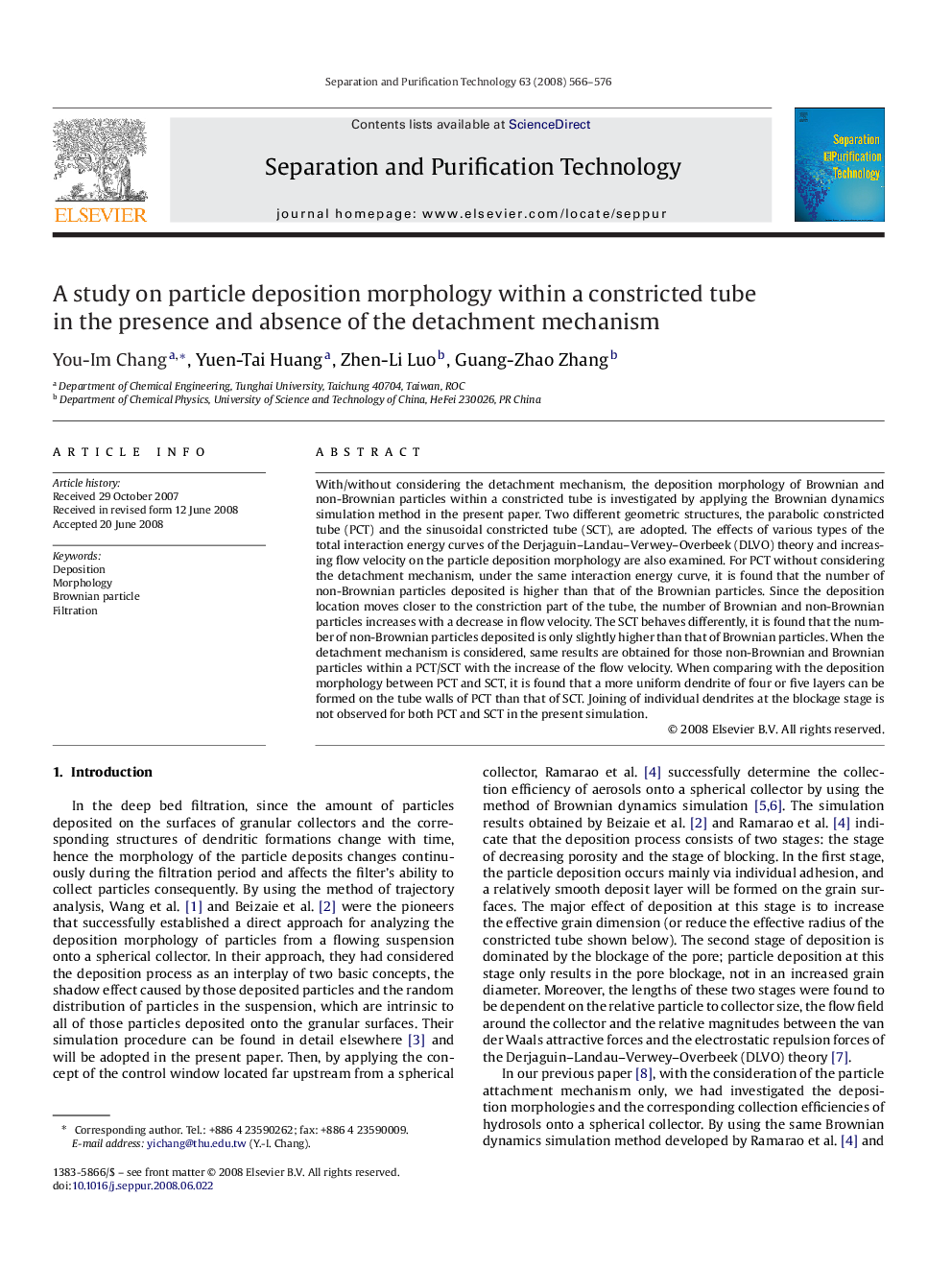| Article ID | Journal | Published Year | Pages | File Type |
|---|---|---|---|---|
| 643407 | Separation and Purification Technology | 2008 | 11 Pages |
With/without considering the detachment mechanism, the deposition morphology of Brownian and non-Brownian particles within a constricted tube is investigated by applying the Brownian dynamics simulation method in the present paper. Two different geometric structures, the parabolic constricted tube (PCT) and the sinusoidal constricted tube (SCT), are adopted. The effects of various types of the total interaction energy curves of the Derjaguin–Landau–Verwey–Overbeek (DLVO) theory and increasing flow velocity on the particle deposition morphology are also examined. For PCT without considering the detachment mechanism, under the same interaction energy curve, it is found that the number of non-Brownian particles deposited is higher than that of the Brownian particles. Since the deposition location moves closer to the constriction part of the tube, the number of Brownian and non-Brownian particles increases with a decrease in flow velocity. The SCT behaves differently, it is found that the number of non-Brownian particles deposited is only slightly higher than that of Brownian particles. When the detachment mechanism is considered, same results are obtained for those non-Brownian and Brownian particles within a PCT/SCT with the increase of the flow velocity. When comparing with the deposition morphology between PCT and SCT, it is found that a more uniform dendrite of four or five layers can be formed on the tube walls of PCT than that of SCT. Joining of individual dendrites at the blockage stage is not observed for both PCT and SCT in the present simulation.
